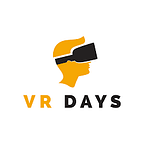Martin shares the magic and mission of Leap Motion with the VR/AR and other industries, and to the world over.
1. What are the most inspiring aspects of your work in XR?
Using my bare hands to touch, grab, pull and push virtual objects around every day for the last couple of years has already fundamentally changed my relationship with computers and how I think about my interactions with digital worlds. Making computing more spatial, more tangible and ultimately more human opens the door for massively positive transformations in areas like education and healthcare and that is something I feel very lucky to be involved with.
2. What is the most promising, exciting development now happening?
I think we’re on the cusp of using our bodies themselves as the input for XR instead of only the mechanical inputs of the previous forms of computing. Buttons, joysticks, touchpads and triggers work well for games but hand tracking, eye tracking and voice recognition will allow us to interact with computers the same way we interact with each other and I find that very exciting.
3. What is the blind spot in XR, something that people seem to overlook?
How early in these mediums we are. When moving pictures were first publicly consumable they took a long time to become movies, TV shows, and eventually the YouTube and social media platforms we have today. Gaming is still very much a growing medium, reaching new audiences in new ways every few years. I think we’re barely at the start of figuring out what XR technologies are and how we’ll end up using them. It’s an exciting time but patience and steady progress will do much more than hype will.
4. What areas in XR have the biggest growth potential and why?
Education and healthcare. Thoughtfully designed, interactive lessons and simulations which students can engage with spatially, tangibly and collaboratively will revolutionize how we learn. And healthcare has so many different areas which could benefit from XR applications: stroke and physical rehab, phobia treatment, dementia treatment and simply providing an easy, non-pharmaceutical escape for many who spend significant amounts of time in hospitals and clinics.
5. Where will XR be in five to ten years from now?
Within the next decade I think much of what we do on our phones today will be unlocked from our screens and happening in 3D all around us, overlaid on the physical world. Mass mainstream adoption of all day XR systems might not have happened yet but we’ll be well on our way there. The physical and digital worlds will be almost indistinguishable and our language around virtual objects and worlds will have changed dramatically.
6. Anything else you would like to share with us?
The tools and resources for creating XR content are far more accessible than I imagined before I became involved. I graduated with a degree in architecture and though I had been following since the Oculus Kickstarter it wasn’t until Leap Motion announced they were giving a free sensor to anyone who entered their 6 week game jam that I considered developing content myself. I downloaded Unity (free game engine), Blender (free 3D modeling application) and watched YouTube tutorials (free and so much variety) to help me build my first VR experience ‘Weightless’, a space station simulator. It ended up placing 2nd in the competition and that’s how I got my foot in the door at Leap Motion. It will take some dedication but if you want to create your own virtual worlds and experiences it is entirely within your reach.
Martin Schubert’s presentation at VR Days Europe
Beyond Controllers: Designing for Human Hands in VR — Unlocking the potential of human-computer interaction by designing to allow honest human input
Excerpt presentation
As mainstream VR/AR input continues to evolve — from the early days of gaze-only input to wand-style controllers and now fully articulated hand tracking — the trend is towards bringing more of our physical bodies into virtual spaces.
When someone first puts on a Leap Motion-enabled headset, it often seems like they’re rediscovering how to use their own hands. In a sense, they are. When we bring our real hands and fingers into a virtual space we also bring a lifetime’s worth of physical biases with us. This is both a daunting design challenge and an opportunity to create intuitive, magical interactions.
This talk will focus on experiments and discoveries made while working with tomorrow’s input: your bare hands.
Bio Martin Schubert
Since completing his professional Bachelor of Architecture degree at the University of Southern California in 2013, Martin Schubert has been actively designing, developing, and experimenting with virtual reality and rich new forms of spatial input like hand tracking. He’s created multiple experiences such as Weightless, Geometric, and Mirrors, written about challenges and discoveries during his design process, and is currently exploring how to make the virtual feel more tangible as a VR designer/developer at Leap Motion. Martin shares the magic and mission of Leap Motion with the VR/AR and other industries, and to the world over.
Martin will speak at the VR Days Europe — Check out the program and don’t miss out on the tickets!
